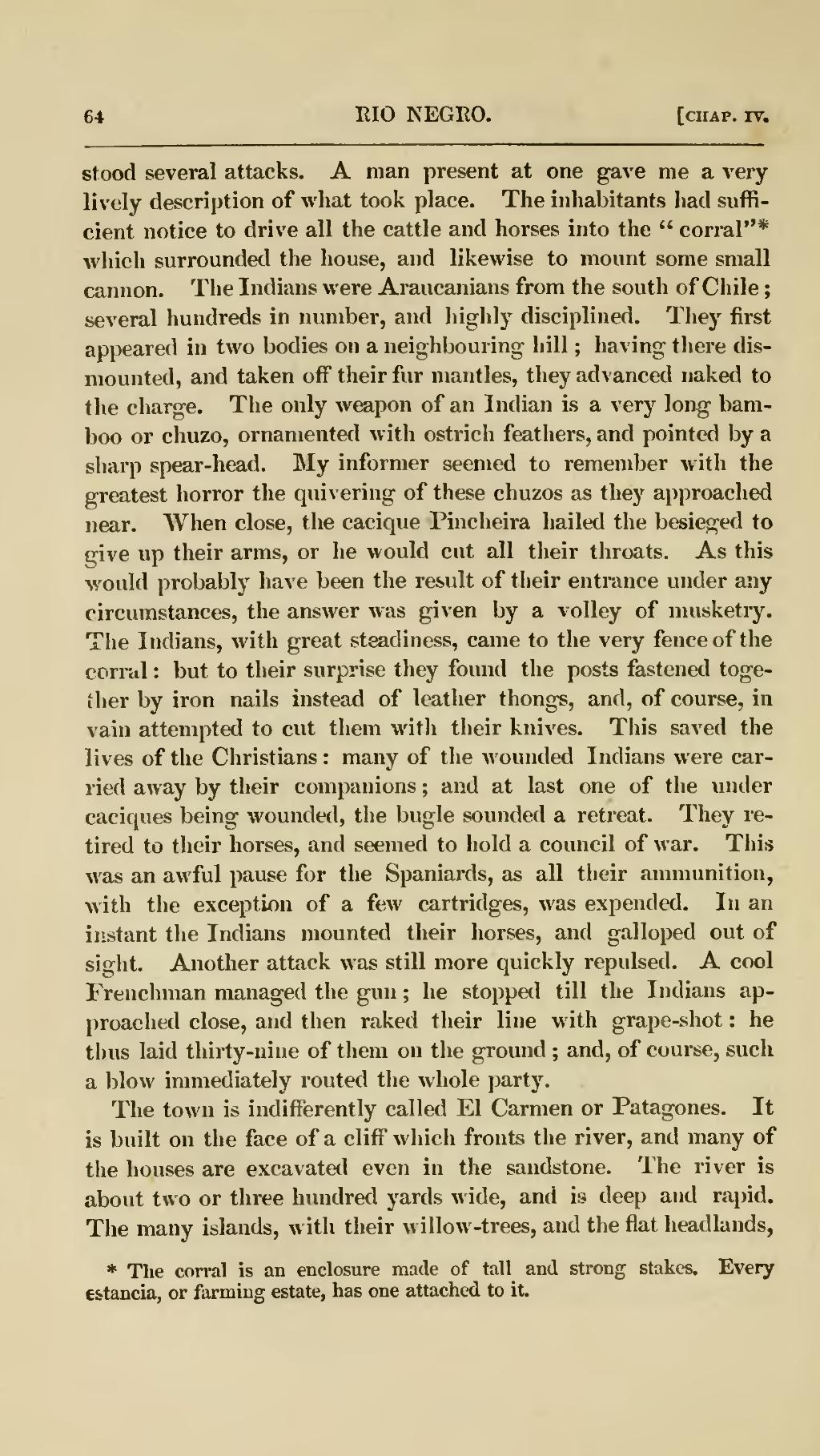stood several attacks. A man present at one gave me a very lively description of what took place. The inhabitants had sufficient notice to drive all the cattle and horses into the “corral”[1] which surrounded the house, and likewise to mount some small cannon. The Indians were Araucanians from the south of Chile; several hundreds in number, and highly disciplined. They first appeared in two bodies on a neighbouring hill; having there dismounted, and taken off their fur mantles, they advanced naked to the charge. The only weapon of an Indian is a very long bamboo or chuzo, ornamented with ostrich feathers, and pointed by a sharp spear-head. My informer seemed to remember with the greatest horror the quivering of these chuzos as they approached near. When close, the cacique Pincheira hailed the besieged to give up their arms, or he would cut all their throats. As this would probably have been the result of their entrance under any circumstances, the answer was given by a volley of musketry. The Indians, with great steadiness, came to the very fence of the corral: but to their surprise they found the posts fastened together by iron nails instead of leather thongs, and, of course, in vain attempted to cut them with their knives. This saved the lives of the Christians: many of the wounded Indians were carried away by their companions; and at last one of the under caciques being wounded, the bugle sounded a retreat. They retired to their horses, and seemed to hold a council of war. This was an awful pause for the Spaniards, as all their ammunition, with the exception of a few cartridges, was expended. In an instant the Indians mounted their horses, and galloped out of sight. Another attack was still more quickly repulsed. A cool Frenchman managed the gun; he stopped till the Indians approached close, and then raked their line with grape-shot: he thus laid thirty-nine of them on the ground; and, of course, such a blow immediately routed the whole party.
The town is indifferently called El Carmen or Patagones. It is built on the face of a cliff which fronts the river, and many of the houses are excavated even in the sandstone. The river is about two or three hundred yards wide, and is deep and rapid. The many islands, with their willow-trees, and the flat headlands,
- ↑ The corral is an enclosure made of tall and strong stakes. Every estancia, or farming estate, has one attached to it.
